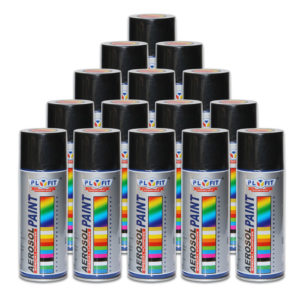What Are SilverFish And How To Get Rid Of Them
If you’re seeing small, gray or silver-blue insects that resemble shrimp around your home or noticing odd damage to your books and clothes, look out: you might have a silverfish infestation. Though silverfish aren’t directly harmful to humans like bedbugs are, these agile, nocturnal insects can damage food, clothing, wallpaper, and books with their feeding habits.
Contents
What Are Silverfish?
Silverfish range from about one-half to one inch long and are found throughout the world. They tend to convene in areas that are moist, dark, and warm. You might see them in your basement, attic, bathroom, or garage. They have long antenna with tapered bodies that give them a fish-like appearance. Their size, speed, and preference for dark environments make them difficult to spot or catch. Sometimes, the only sign you may see of a silverfish infestation is their feces, which look like grains of pepper.
The Silverfish Life Cycle
Most silverfish live three to four months, and silverfish females can lay eggs for most of their lifecycle— anywhere from one to three a day for some species, or two to twenty in others. The eggs hatch 19 to 60 days later. Baby silverfish are smaller than adults and start out white in color. It is almost impossible for humans to see silverfish eggs.
Why Are Silverfish a Problem?
Silverfish bugs survive by consuming polysaccharides. These are a kind of carbohydrate found in things like:
- Adhesives in book bindings and wallpaper paste
- Fabrics and textiles such as cotton, linen, and silk
- Paper
- Hair and dandruff
- Plaster
- Carpeting
- Shampoo
- Dead insects, including their own shed skins
- Plants, including houseplants
- Cereals, sugars, and coffee
Their feeding habits often result in obvious damage, such as yellow stains and holes in clothing, holes in cereal boxes and other pantry items, and wallpaper dimples or flaking. A silverfish can survive up to a year without food as long as it has access to water, and despite their preference for damp areas, they can survive just about anywhere. Besides giving you the creepy-crawlies, they can also negatively affect the value of your home. Since you can’t reasonably get rid of everything they feed on, how can you get rid of silverfish bugs?
Mild infestations may be controlled by:
- Installing dehumidifiers
- Making repairs to any leaking pipes creating dampness
- Regular vacuuming, especially around baseboards and other nooks and crannies
- Sealing food items in plastic containers
- Increasing ventilation to closed areas
- Caulking crevices and cracks
Natural Ways To Get Rid Of Silverfish
Cinnamon and cloves are two natural repellents of silverfish, but don’t kill adult silverfish or their eggs. Other options include citrus-based sprays, mothballs, lavender oil, cedar, and diatomaceous earth. Diatomaceous earth is the only one of these repellents that actually kills silverfish by dehydrating them when they walk through it. It is harmless to people and pets. Sticky traps and other forms of bait traps are available at most home improvement stores and can lower the population of adult silverfish over time.
Building a Trap to Positively Identify a Silverfish Infestation
Cover the outside of a glass container with masking tape to give it a rough surface that the silverfish can grip onto. Put a tempting silverfish food in the container, such as bread or sugar-water, making sure it isn’t filled more than halfway. Put the container in the area you suspect is infested for 24 hours, or at least overnight. Silverfish will be able to enter the container, but the sides will be too smooth for them to escape. Some people also use this as their primary method for disposing of silverfish. The trap can be dumped outside away from the home.
Attacking Silverfish Populations with Pesticides
If natural methods don’t work, it’s time to invest in chemical warfare. Remember that pesticides need to be handled carefully, because they are generally toxic to humans and mammals. Your two main options are boric acid and liquid pyrethrin. Do not use these substances around food or food preparation areas. You also need to use a disposable face mask to protect from accidental inhalation.
Liquid pyrethrin can be sprayed into cracks and crannies around baseboards, doors, and windows. This method kills adult silverfish, but not their eggs.
Boric acid kills both adult silverfish and nymphs, or baby silverfish. Sprinkle it around infested areas. Replace with dry powder whenever the applied powder becomes damp.
At this point, you most likely have a severe or persistent infestation and are thoroughly creeped out. Investing in a well-established pest exterminator becomes worthwhile when you are in over your head and just want the problem gone. An exterminator can provide the best multi-faceted approach to eliminating silverfish and their eggs. Any sort of silverfish extermination attempts will need to be repeated every few months to deal with the hatching of new eggs.
Non Toxic Spray

This non-toxic spray kills larvae, eggs, and adult insects by breaking down their exoskeleton. It is safe to spray around the home and works only on the insects. Feel good about spraying indoors around pets, plants and children.
All Natural Non Toxic Insect Killer Spray by Killer Green
